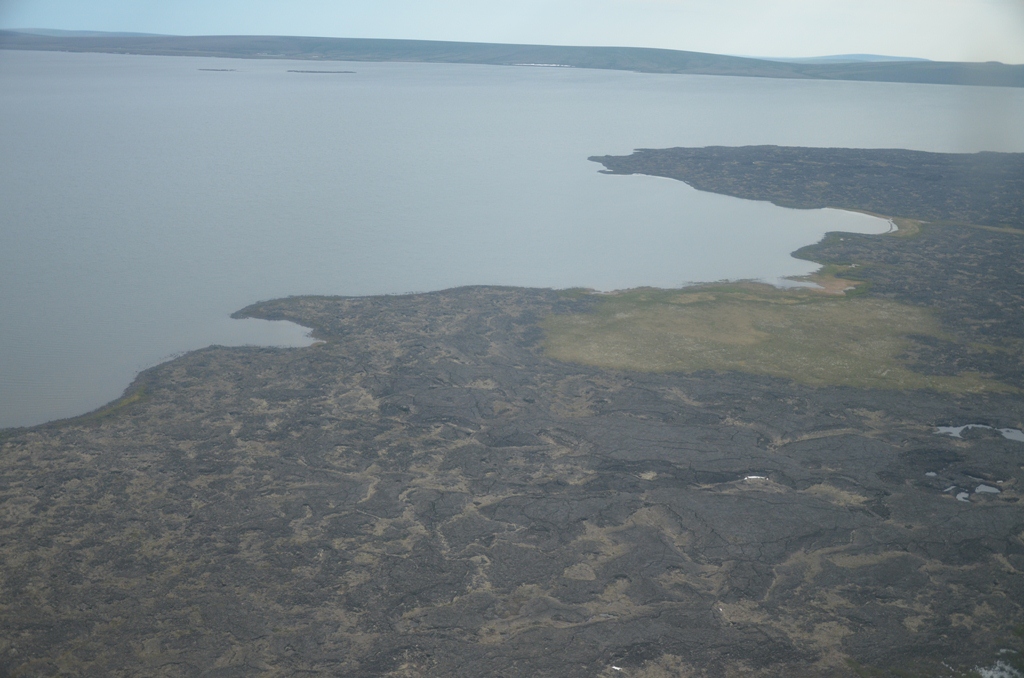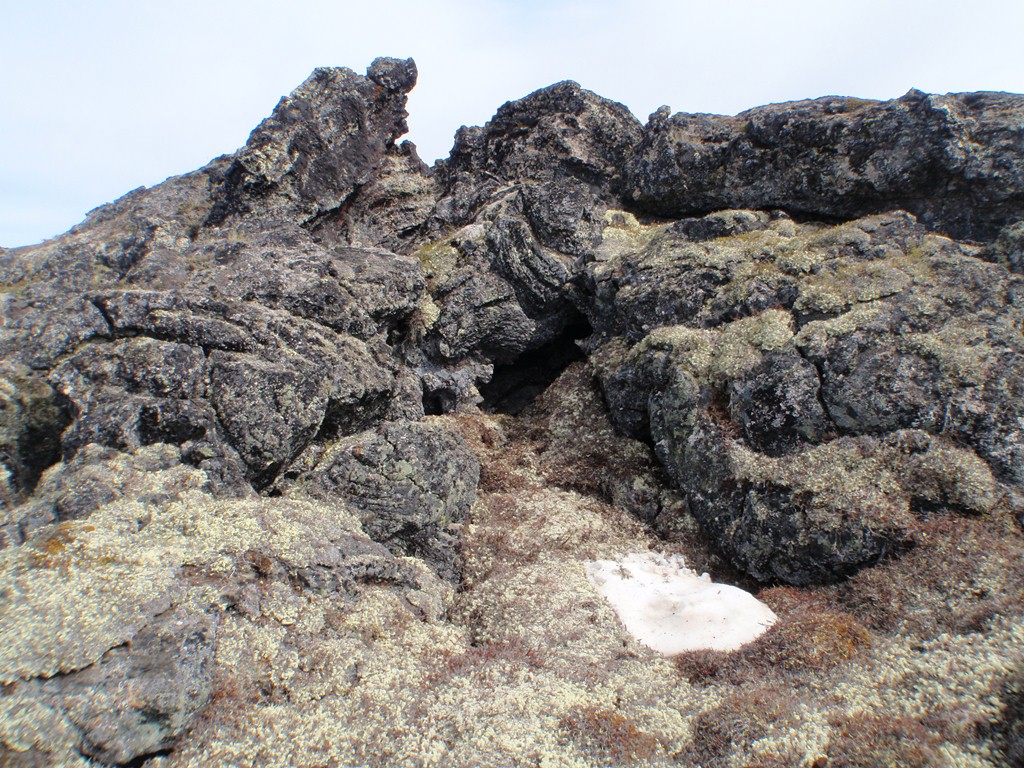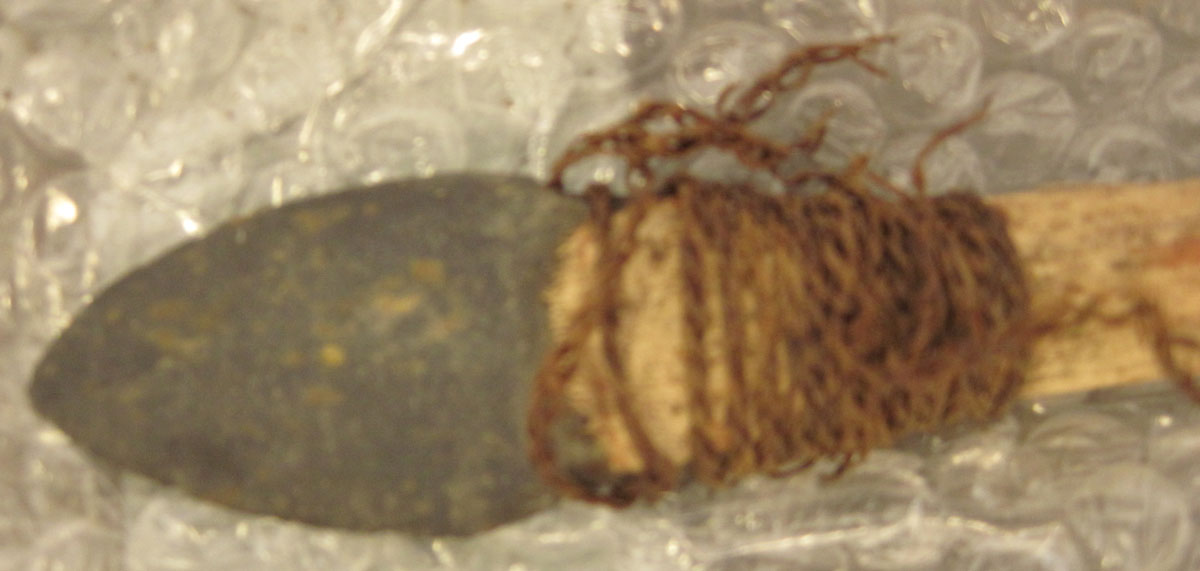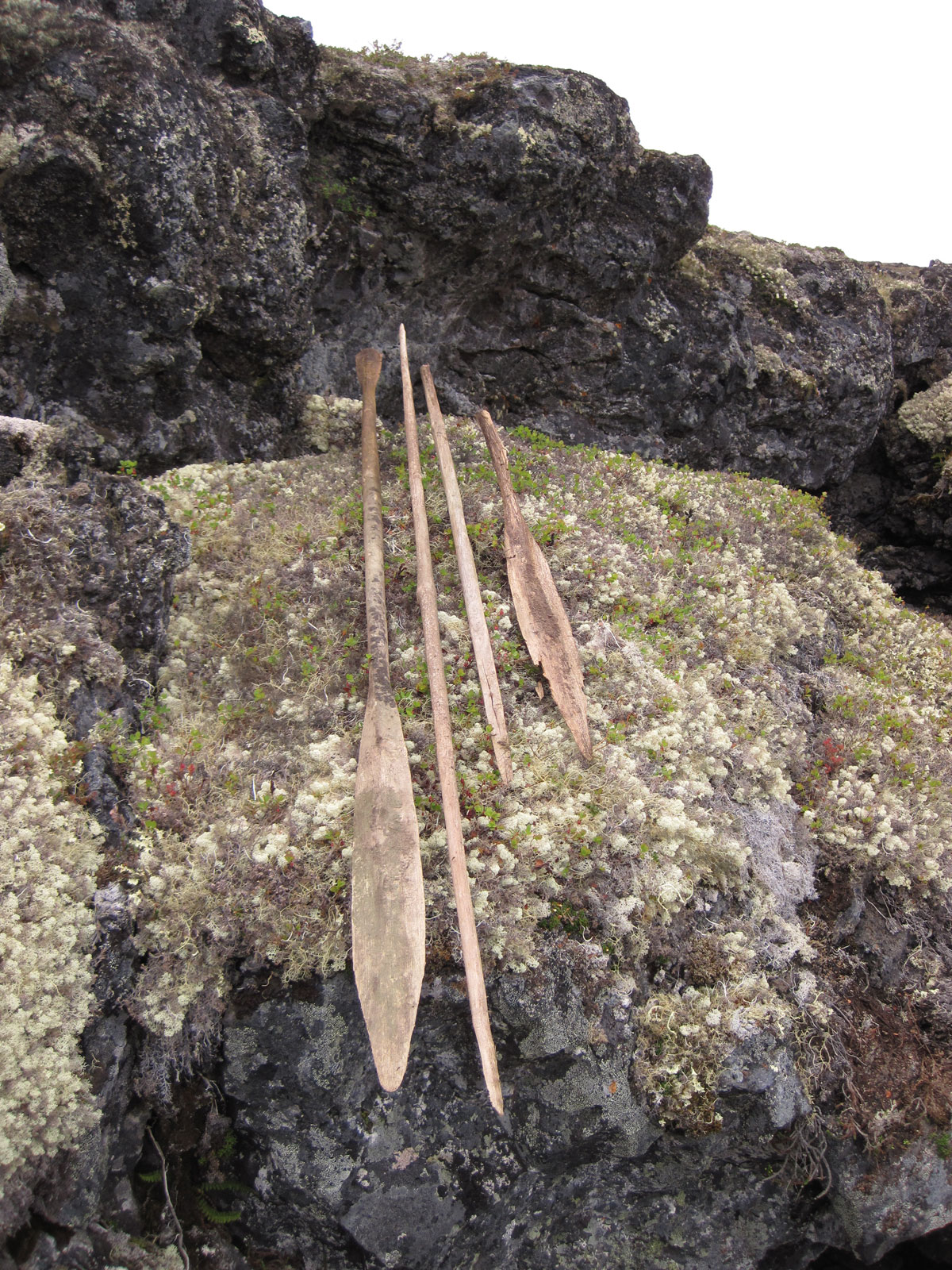The following text was adapted from a report authored by Bob Gal (retained in italics). Mr. Gal is an NPS archaeologist who will soon retire from decades of service and studies in the Western Arctic National Parklands.
USGS Benjamin Jones Photo
USGS Benjamin Jones Photo
In June of 2010 geographer Benjamin M. Jones (U.S. Geological Survey - Alaska Science Center) and permafrost scientist Guido Grosse (Permafrost Laboratory, Geophysical Institute, University of Alaska Fairbanks) were conducting research on permafrost near the Lost Jim lava flow in Bering Land Bridge National Preserve and stumbled upon two collapsed pits: one containing a fire hearth and a second revealing the end of a kayak paddle and a stone-tipped lance. Because the context of an artifact, or environment in which it was found, is important to assist archaeologists age and interpret it, the researchers took only photos and recorded the location. The following summer, National Park Service archaeologists Mike Holt and Jeanne Schaaf, assisted by Northwestern Aviation's pilot Jim Kincaid, returned to the site and found two double-ended wooden kayak paddles and the wooden shaft fragments of three caribou lances. One of the shaft fragments has a tanged or shouldered, ground slate end blade (lance head) still lashed in place with braided sinew. Two other shaft fragments have clefts in one end like that which holds the ground slate blade. One 6' 8"shaft fragment does not display a cleft for an end blade.
NPS Jeanne Schaaf Photo
John Murdoch was a naturalist and member of the International Polar Expedition that spent 1881-1883 at Point Barrow. Murdoch collected 1,722 ethnological specimens and published Ethnological Results of the Point Barrow Expedition in 1892. The report is detailed in its description of technology and material culture and Murdoch recorded how items were actually used. Murdoch (1892:244) reported that deer [caribou] lances were "…used in the kaiak for stabbing deer swimming in the water, after the manner frequently noticed among other Eskimo. A pair of these spears is carried in beckets on the forward deck of the kayak. On approaching a deer one of them is slipped out of the becket and laid on the deck, with the butt resting on the combing of the cockpit. The hunter then paddles rapidly up alongside of the deer, grasps the lance near the butt, as he would a dagger, and stabs the animal with a quick downward thrust. This spear is called kapun…" According to Murdoch (1892:243), some of these deer lances were over six feet long "and tapered from a diameter of 0.8 inch about the middle to about one-half inch at each end. The tip is cleft to receive the tang of the [lance] head…" Murdoch's description of caribou lances in use in the late 19th Century fits the Lost Jim Flow artifacts almost perfectly.
NPS Jeanne Schaaf Photo
But the Lost Jim Flow Cache artifacts bring more questions to the fore: The wood and slate did not come from the treeless lava landscape of southeastern Bering Land Bridge National Preserve-so where did they come from? Was a kayak and its cover cached nearby? Caribou drives are usually communal affairs-are the caches of other hunters nearby? Where did the hunters live? The Lost Jim Flow Cache story is only starting….




